Verilog学习笔记(05)
Posted 高山流水123a s d
tags:
篇首语:本文由小常识网(cha138.com)小编为大家整理,主要介绍了Verilog学习笔记(05)相关的知识,希望对你有一定的参考价值。
文章目录
参考:Verilog数字VLSI设计教程
硬件描述语言Verilog
Verilog HDL数字设计与综合
Verilog HDL 数字集成电路高级程序设计
6. 组合逻辑电路
当一个数字电路中的输出信号完全是由输入信号所决定时,这样的电路称之为组合电路
组合电路基本设计方式
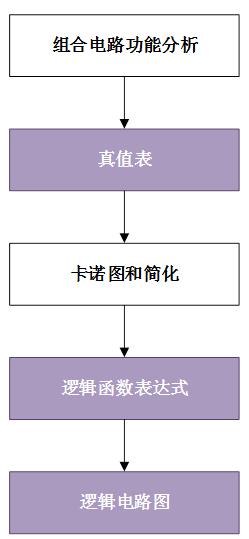
1. 数据比较器
1位数据比较器
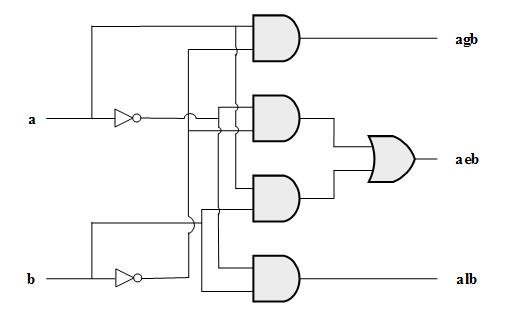

Verilog设计代码如下:
module comp_1b(a,b,agb,aeb,alb);
input a,b;
output agb,aeb,alb;
wire agb,aeb,alb;
assign agb=a&(~b);
assign aeb=a^~b;
assign alb=(~a)&b;
endmodule
测试环境如下:
module comp_1b_tb;
reg a,b;
wire agb,aeb,alb;
comp_1b U1(.a(a),.b(b),.agb(agb),.aeb(aeb),.alb(alb));
initial
begin
a=1'b1;b=1'b1;
#100 a=1'b0;
#100 a=1'b1;b=1'b0;
#100 a=1'b0;
#100 b=1'b1;
#200 $finish;
end
endmodule
设计一个8位数据比较器
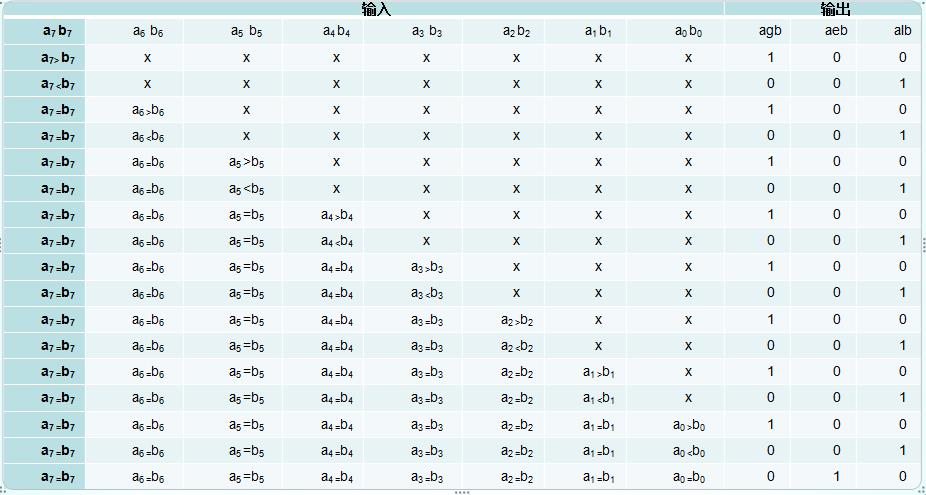
module comp_8b(a,b,agb,aeb,alb);
parameter w=8;
input [w-1:0]a,b;
output agb,aeb,alb;
reg agb,aeb,alb;
always@(a or b)
if(a>b) agb,aeb,alb=3'b100;
else if(a<b) agb,aeb,alb=3'b001;
else agb,aeb,alb=3'b010;
endmodule
module comp_8b_tb;
reg [7:0]a,b;
wire agb,aeb,alb;
comp_8b U3(.a(a),.b(b),.agb(agb),.aeb(aeb),.alb(alb));
initial
begin
a=8'b00110101;b=8'b00110100;
#100 a=8'b00110011;b=8'b00110011;
#100 a=8'b00110011;b=8'b10110011;
#100 a=8'b11110011;b=8'b01110011;
#100 a=8'b01100110;b=8'b01100110;
#100 a=8'b00110000;b=8'b11000011;
#100 a=8'b00111111;b=8'b00000000;
#200 $finish;
end
endmodule
2. 数据选择器
设计一个MUX2to1
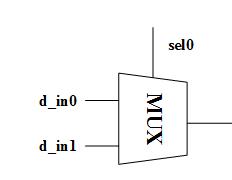
module mux2to1(d_in,d_out,sel);
input [1:0]d_in;
input sel;
output d_out;
wire d_out;
assign d_out=sel?d_in[1]:d_in[0];
endmodule
或者
module mux2to1_1(d_in,d_out,sel);
input [1:0]d_in;
input sel;
output d_out;
reg d_out;
always @(d_in or sel)
begin
if(sel) d_out=d_in[1];
else d_out=d_in[0];
end
endmodule
module mux2to1_tb;
reg[1:0]d_in;
reg sel;
wire d_out;
mux2to1 U2(.d_in(d_in),.d_out(d_out),.sel(sel));
initial
begin
d_in=2'b10;sel=1'b0;
#100 sel=1'b1;
#100 d_in=2'b11;
#100 sel=1'b0;
#100 d_in=2'b01;
#100 sel=1'b1;
#100 d_in=00;
#100 sel=1'b0;
#200 $finish;
end
endmodule
设计一个MUX4to1



module mux4to1_2(d_in,d_out,sel);
input [3:0]d_in;
input [1:0]sel;
output d_out;
wire d_out;
wire [1:0]w1;
assign w1=sel[0]?d_in[3],d_in[1]:d_in[2],d_in[0];
assign d_out=sel[1]?w1[1]:w1[0];
endmodule
module mux4to1_2_tb;
reg [3:0]d_in;
reg [1:0]sel;
wire d_out;
mux4to1_2 U1(.d_in(d_in),.d_out(d_out),.sel(sel));
initial
begin
d_in=4'b1010;sel=2'b00;
#100 sel=2'b01;
#100 sel=2'b11;
#100 sel=2'b10;
#100 d_in=4'b1100;
#100 sel=2'b11;
#100 sel=2'b00;
#100 sel=2'b01;
#200 $finish;
end
endmodule
3. 数据分配器
设计一个1-4数据分配器


module dmux_4(en,din,dout,sel);
input en,din;
input [1:0]sel;
output[3:0]dout;
reg[3:0]dout;
always@(en or sel or din)
if(!en) dout=4'b0;
else
case(sel)
2'b00:dout[0]=din;
2'b01:dout[1]=din;
2'b10:dout[2]=din;
2'b11:dout[3]=din;
endcase
endmodule
module dmux_4_tb;
reg en,din;
reg[1:0]sel;
wire[3:0]dout;
dmux_4 U1(.din(din),.en(en),.sel(sel),.dout(dout));
initial
begin
en=1'b0;din=1'b1;sel=2'b00;
#100 en=1'b1;
#100 sel=2'b01;
#100 sel=2'b11;
#100 din=1'b0;sel=2'b01;
#100 din=1'b1;
#100 sel=2'b11;
#200 $finish;
end
endmodule
4. 数据编码器
BCD编码器


module BCD8421(d_in,d_out);
input [8:0]d_in;
output [3:0]d_out;
reg [3:0]d_out;
always@(d_in)
case(d_in)
9'b000000000:d_out=4'b0000;
9'b000000001:d_out=4'b0001;
9'b000000010:d_out=4'b0010;
9'b000000100:d_out=4'b0011;
9'b000001000:d_out=4'b0100;
9'b000010000:d_out=4'b0101;
9'b000100000:d_out=4'b0110;
9'b001000000:d_out=4'b0111;
9'b010000000:d_out=4'b1000;
9'b100000000:d_out=4'b1001;
default d_out= 4'b0000;
endcase
endmodule
module BCD8421_tb;
reg[8:0]d_in;
wire[3:0]d_out;
BCD8421 U0(.d_in(d_in),.d_out(d_out));
initial
begin
d_in=9'b010000000;
#100 d_in=9'b000000001;
#100 d_in=9'b000000010;
#100 d_in=9'b000000100;
#100 d_in=9'b000001000;
#100 d_in=9'b000010000;
#100 d_in=9'b100001000;
#100 d_in=9'b000100000;
#100 d_in=9'b001000000;
#100 d_in=9'b000000000;
#100 d_in=9'b100000000;
#200 $finish;
end
endmodule
8-3编码器


module code8_3(din,dout);
input [7:0]din;
output [2:0]dout;
reg [3:0]dout;
always@(din)
case(din)
8'b00000001:dout=3'b000;
8'b00000010:dout=3'b001;
8'b00000100:dout=3'b010;
8'b00001000:dout=3'b011;
8'b00010000:dout=3'b100;
8'b00100000:dout=3'b101;
8'b01000000:dout=3'b110;
8'b10000000:dout=3'b111;
default:dout=3'b000;
endcase
endmodule
module code8_3_tb;
reg[7:0]din;
wire[2:0]dout;
code8_3 U1(.din(din),.dout(dout));
initial
begin
din=8'b00001000;
#100 din=8'b00000001;
#100 din=8'b01000000;
#100 din=8'b00000000;
#100 din=8'b00010000;
#100 din=8'b00000000;
#100 din=8'b00100000;
#100 din=8'b01000000;
#100 din=8'b10000000;
#100 din=8'b11000000;
#200 $finish;
end
endmodule
8-3优先编码器

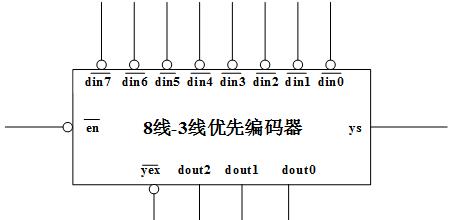
module code8_3_p(din,dout,en,ys,yex);
input [7:0]din;
input en;
output ys,yex;
output [2:0]dout;
reg [2:0]dout;
reg ys,yex;
always@(din or en)
if(en) dout,ys,yex=3'b111,1'b1,1'b1;
else begin
casex(din)
8'b0???????:dout,ys,yex=3'b000,1'b1,1'b0;
8'b10??????:dout,ys,yex=3'b001,1'b1,1'b0;
8'b110?????:dout,ys,yex=3'b010,1'b1,1'b0;
8'b1110????:dout,ys,yex=3'b011,1'b1,1'b0;
8'b11110???:dout,ys,yex=3'b100,1'b1,1'b0;
8'b111110??:dout,ys,yex=3'b101,1'b1,1'b0;
8'b1111110?:dout,ys,yex=3'b110,1'b1,1'b0;
8'b11111110:dout,ys,yex=3'b111,1'b1,1'b0;
8'b11111111:dout,ys,yex=3'b111,1'b0,1'b1;
endcase
end
endmodule
module code8_3_p_tb;
reg[7:0]din;
reg en;
wire ys,yex;
wire[2:0]dout;
code8_3_p U2(.din(din),.dout(dout),.en(en),.ys(ys),.yex(yex));
initial
begin
din=8'b00001100;en=1'b1;
#100 en=1'b0;din=8'b10000001;
#100 din=8'b11000010;
#100 din=8'b11000100;
#100 din=8'b11101000;
#100 din=8'b11110000;
#100 din=8'b11111010;
#100 din=8'b11111100;
#100 din=8'b11111110;
#100 din=8'b11111111;
#200 $finish;
end
endmodule
余3编码器

module code_yu3(d_in,d_out);
input [3:0]d_in;
output [3:0]d_out;
assign d_out=d_in+4'b0011;
endmodule
module code_yu3_tb;
reg[3:0]d_in;
wire[3:0]d_out;
code_yu3 U4(.d_in(d_in),.d_out(d_out));
initial
begin
d_in=4'b0001;
#100 d_in=4'b0101;
#100 d_in=4'b0100;
#100 d_in=4'b1001;
#100 d_in=4'b0111;
#100 d_in=4'b0000;
#200 $finish;
end
endmodule
5. 数据译码器
3-8译码器
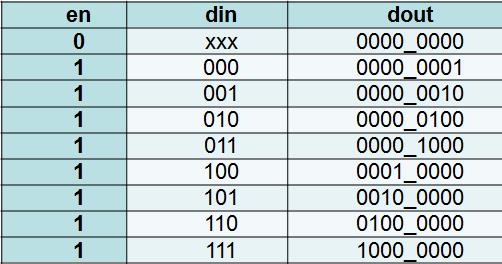

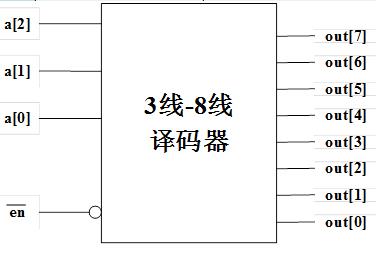
module decode3_8(en,din,dout);
input [2:0]din;
input en;
output [7:0]dout;
reg [7:0]dout;
always@(en or din)
if(!en) dout=8'b0;
else case(din)
3'b000:dout=8'b00000001;
3'b001:dout=8'b00000010;
3'b010:dout=8'b00000100;
3'b011:dout=8'b00001000;
3'b100:dout=8'b00010000;
3'b101:dout=8'b00100000;
3'b110:dout=8'b01000000;
3'b111:dout=8'b10000000;
endcase
endmodule
module decode3_8_tb;
reg[2:0]din;
reg en;
wire[7:0]dout;
decode3_8 U2(.din(din),.en(en),.dout(dout));
initial
begin
en=1'b1;din=3'b000;
#100 din=3'b001;
#100 din=3'b011;
#100 din=3'b110;
#100 en=1'b0;din=3'b111;
#100 en=1'b1;
#100 din=3'b010;
#100 din=3'b100;
#200 $finish;
end
endmodule
8421BCD转二进制译码
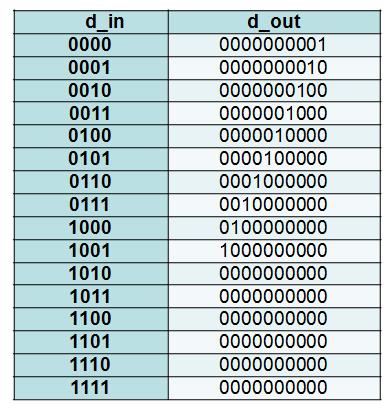
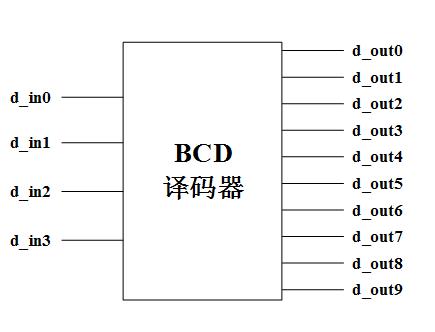
module decode_BCD(d_in,d_out);
input [3:0]d_in;
output [9:0]d_out;
reg [9:0]d_out;
always@(d_in)
begin
case(d_in)
4'b0000:d_out=10'b0000000001;
4'b0001:d_out=10'b0000000010;
4'b0010:d_out=10'b0000000100;
4'b0011:d_out=10'b0000001000;
4'b0100:d_out=10'b0000010000;
4'b0101:d_out=10'b0000100000;
4'b0110:d_out=10'b0001000000;
4'b0111:d_out=10'b0010000000;
4'b1000:d_out=10'b0100000000;
4'b1001:d_out=10'b1000000000;
default:d_out=10'b0;
endcase
end
endmodule